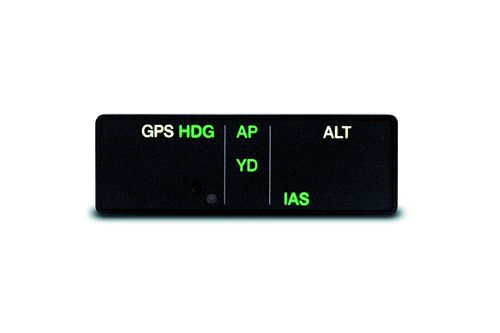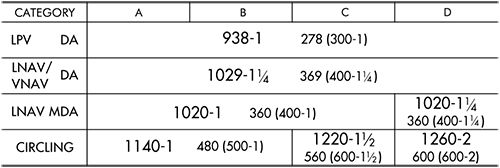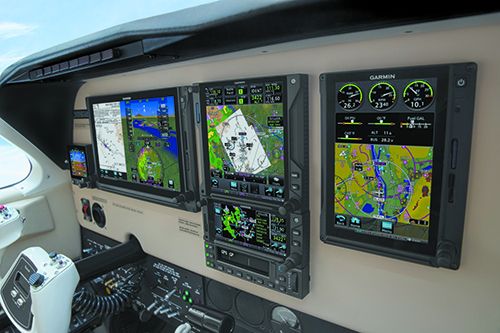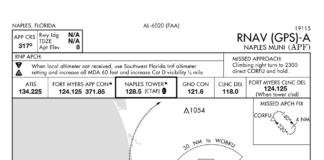The FAA and NASA have identified errors commonly made by pilots using advanced avionics. Each of the errors discussed below were unearthed during research in which pilots and flight instructors took part. If we can exorcise these mistakes, our advanced avionics can deliver on their promises of increased safety and utility. Let’s walk through these errors one by one.
Wrong Navigation Source
Center advises you are left of course, but the HSI is centered. Oh, that little NAV source annunciator says you’re on GPS 2 when you thought you were on GPS 1. Set to GPS 2, the autopilot corrects. You resolve to pay that small indicator more attention.
Color coding on the eHSI helps. Avidyne uses green for GPS 1 and blue for GPS 2. Garmin colors its GPS’s in magenta and ground NAVAIDs in green (think of grass).
Like source, verify the right autopilot mode. “Why didn’t it turn?” If you use HDG mode to join an airway but don’t arm NAV mode, you’ll fly right through the airway.
Wind During Descent
Too many pilots rely on VNAV and cannot mentally plan a descent accounting for wind. Here’s a simple technique to calculate descents.
Say your groundspeed in descent is 120 knots or two NM per minute. If a fix is eight NM distant, that’s four minutes. The altitude to lose is 3000 feet. Divide 3000 by four minutes to get 750 feet per minute. Tweak as necessary.
Or, just use the rule of thumb of three miles per thousand feet to lose. Again, it’s rough and usually needs tweaking, but it’ll get you started. With the same example, 3000 feet to lose means start nine miles out, a bit more conservative than the actual calculation above. For both, you should adjust ever 1000 feet.
Re-Engage Sequencing
In OBS mode you intercept a course toward FEEBL intersection and cross it. Why does the TO/FROM flag now show FROM when GPS is “to, to” navigation? Why didn’t the flight plan sequence to KITTY? A quick look shows that you didn’t reengage sequencing. You stab the OBS button. The flag flips, and KITTY’s now straight ahead.
Forgetting to unsuspend is the most common error made after sequencing is stopped. Humans find it hard to remember future tasks such as upcoming mode changes. Build a checklist or create callouts for maneuvers like course intercepts to reinforce your mode awareness.
Wrong Course or Waypoint
Let’s think before we act. A pilot gets a heading to intercept a course, but then mistakenly puts the heading into the GPS instead of the course to intercept.
Minimize reversal errors like this by being aware of the lurking mistake. A similar intercept error occurs when ATC instructs the pilot to intercept a course to a different waypoint, but the pilot does not set the navigator.
Sequencing During a Hold
Heading toward the holding waypoint on the miss, if you mistakenly allow the navigator to sequence past it, the navigator could run out of waypoints and end up giving you positive guidance to … nowhere. If you enable sequencing in the hold, it will sequence past the holding waypoint and leave you without guidance on the inbound course. Most navigators automatically switch to SUSPEND as the airplane crosses the waypoint entering the hold. Only you can resume sequencing. Verify you’ll go where you expect.
Brief the Approach
Every IFR pilot needs an organized way to brief an approach. Any checklist or briefing flow works if it covers the essentials in a logical order. It can help to brief out loud. Oft-missed points are in the notes, approach lighting and pilot controlled lighting, how to identify the missed approach point, how you’ll manage the shift from the approach to nav on the miss and where the missed approach holding fix is located. Some details aren’t explicitly called out but have to be sought and reasoned through.
Verify Approach Mode
The most common error during a GPS approach on autopilot is failure to assure approach mode is engaged before the descent. If you routinely check for approach coupling two miles before the final approach waypoint, you’ll avoid (or discover and correct) this mode error.
Some autopilots disconnect if the navigation source is changed. Select the source first, then hit APR. Alternatively, remember to hit APR whenever you change the navigation source. It’s worth investigating to discover how your AP reacts to automatic and manual navigation source changes.

Wrong Approach Minimums
One GPS instrument approach chart can offer three or more approach minimums. Multiple choices can lead pilots to select the wrong minimums.
The approach type with the lowest minimums comes first, then the remainder in ascending order. Verbalize the equipment you’re flying, such as “I’m non-WAAS,” and the type of procedure you wish to fly, “I need an LNAV.” Then search for minimums accordingly and verbalize the line you’ve chosen.

Final Approach Waypoint
A few navigators lack a vectors-to-final feature. If not equipped, be sure sequencing is enabled so the unit can switch to approach mode two miles before the final approach waypoint. Should the GPS pass the waypoint without sequencing, the approach will be disabled, leaving you to hand-fly the missed.
If ATC asks you to hold before the approach, be sure to set SUSPEND mode before reaching the waypoint. Standard navigators use the hold as a reversal without halting sequencing. If you allow the unit to sequence, you might have to reload the approach. The waypoint should appear in the flight plan twice, once as you cross it outbound for the reversal and again inbound.
Missing the Missed
All GPS units suspend waypoint sequencing at the missed approach waypoint. Distance from the waypoint can be misleading. If you cross it abeam, the range will never reach zero and then start increasing. Look for the To/From arrow to flip to FROM as the SUSPEND message appears.
One reason for SUSPEND is that a GPS cannot know whether you land or miss. There is also no one way to represent the climbs and turns required on a missed approach procedure because performance varies by airplane. Resume sequencing once you comply with the initial missed approach instructions.
If the miss calls for a straight-out climb to say, 3000 before turning toward the missed approach holding fix, something’s in the way. If you unsuspend before reaching 3000, the GPS could fly you straight to the waypoint and possibly into a CFIT accident. Newer navigators, though, do code those climbs, so know what your navigator does.
Sometimes ATC issues alternate holding instructions. Be ready to plug new waypoints into the route, and/ or intercept and track courses to these waypoints.
The Flight Director is Dumb
A flight director can lure you into fixation or relying on it too much. Does the FD know the correct route or course? Of course not; only you know. Cross-check with other navigation instruments and make them part of your scan. If there are any discrepancies, minimize the automation while you figure it out. Equipment usually performs as programmed—did you program it correctly? As always, fly the airplane first, on your cleared route and altitude.
(The article on Page 12 is an excellent treatise on working with your autopilot.)
Is This Thing On?
Just because the flight director is on doesn’t mean the autopilot’s engaged. Mode awareness includes being aware of the autopilot’s mode and its extent of engagement, vertically and horizontally.
Arm Altitude Mode
Research demonstrates that the most common error made by pilots during climbs and descents is the failure to arm altitude mode to capture an assigned altitude. Most often, this occurs after the pilot incorrectly sets the altitude selector or alerter. Should the airplane stray 300 feet or more from the altitude assigned, an altitude deviation ensues. Such excursions are among the most frequent foul-ups reported to the NASA Aviation Safety and Reporting System (ASRS).
A system malfunction can occur if there is an altitude change while the autopilot tries to capture the altitude. Be ready to hand-fly the aircraft should the bits and bytes get scrambled.
The alerter is no substitute for altitude awareness. Call out “one thousand to go” to maintain awareness. Another frequent error is a failure to distinguish between 10,000 and 11,000 feet because of the similar-sounding ones and zeros.
Learn for Correlation
Autopilot usage is more than pushing buttons and twisting controls. If you memorize the steps to use an autopilot, what you learn is “monkey-see; monkeydo.” This approach fails when a circumstance not remembered inevitably occurs.
Autopilots have subtleties that defy rote learning. Some need help to enter NAV mode, notably if the airplane is pointing the wrong way. You might need to use HDG mode until the AP can capture NAV mode—if it can capture NAV mode on a heading (some can’t).
Speaking of HDG mode, if you change heading (slew the heading bug) by more than 180 degrees, how will your AP respond? Does it follow the initial direction you turn the bug, or does it take the shortest turn to the bug?
No amount of book-larnin’ will teach you how an autopilot reacts when it’s programmed to climb beyond the airplane’s ability, into a power-on stall. Similarly, what happens when the AP is set to hold level flight into a stall?
Studies show that pilots who take time to understand how and why a system works as it does benefit three ways. First, the properly trained pilot can deal with situations other than those learned and practiced in training, that are sure to arise while flying.
Second, there is an advantage in the simple precept that form follows function. Since all GPS navigators do the same things, the differences are in how to do them. If you’ve used a Garmin GNS 430, it works almost identically to the GNS 530, and both play into the G1000. Form and function also work between manufacturers. Broadly, once you’ve seen one, you’ve seen ‘em all.
A third advantage is that the pilot who understands can recall procedures even though they have gone unused for some time. Memorized procedures fade quickly. The pilot who fits chunks of learning like puzzle pieces into a whole cohesive picture retains much more of what they learn.
Moving Map Isn’t Primary Nav
In his March 2020 IFR article, “Are You Ready for MON?” Luca Bencini-Tibo notes that the moving map is not for navigation. Luca suggests we ask ourselves, “Are you comfortable flying without a moving map?” If not, he continues, “you’ve lost a fundamental skill that is required of all pilots.”
A NASA study shows that the map lures pilots away from conventional instruments and outside references. But does it provide adequate situational awareness?
No, they say: “…the moving map does not mean that the pilot maintains true situational awareness or involvement with the operation of the flight to a degree needed for a safe outcome.” The pilot is too far outside the loop.
A second study illustrates what it means to be in the loop. Pilots were asked to point out geographical features to a passenger using a moving map. Asked to repeat the course without it, they performed just as well. Pointing out features kept them in the loop.
NASA concluded, “The map is a supplement, not a substitute for active involvement in the navigational process.” Bottom line: Maps only aid situational awareness; they’re not primary nav.
Skip the Weather Briefing?
NTSB accident narratives note that, “the pilot failed to obtain a weather briefing.” Many investigations note that the pilot felt the need to rush.
Rushing and airplanes don’t mix. It’s tempting to speed things by checking the weather in the cockpit. It seems efficient and well, cool, but it’s a false economy. Whether you brief online or call FSS, you’ll get a better overall view of the weather. FSS also offers PIREPs not yet in the system, especially valuable when the weather goes way down.
A TBM 700 pilot encountered severe ice in IMC at 17,000 feet over Morristown, NJ. The TBM abruptly stalled and crashed. He had filed an IFR flight plan online but skipped the briefing. Severe icing was not forecasted, but he missed an AIRMET warning of moderate icing at altitudes the pilot was flying. Many airliners reported icing in the area before the accident. At least three called it severe. He and his family were lost.
FIS-B provides NOTAMs from only the last 30 days. Then they’re deleted from FIS-B even if they’re still in effect. A standard briefing offers more NOTAMs and essential details for your route. After takeoff—with all your flight duties competing for your attention—is not the time to get and try to assimilate a proper weather briefing. Besides, if it’s bumpy, how can you read your MFD’s fine print?
Common Traits
Mode situational awareness is the pilot’s ability to track how avionics are configured. All systems annunciate their mode. Mode awareness helps you see them sooner.
Overreliance on technology such as autopilots, GPS-derived routing, moving maps, and altitude alerters take you too far out of the loop.
Study for correlation, not memorization of procedures.
Entering incorrect data often produces the question, “What’s it doing now?” It’s really about what the pilot did or failed to do.
Manage your automation. Less automation, even none, is often better in fluid situations such as departures and arrivals. More automation suits the en route phase.
In the movie Top Gun, instructor Mike “Viper” Metcalfe advises student Pete “Maverick” Mitchell that, “A good pilot is compelled to always evaluate what’s happening so he can apply what [he’s] learned.” Sage advice, that.






Managing your automation is easy, if you have Collins, or Honeywell.
I had a learning experience with my GNS 430w/530w the other day while IMC on an RNAV approach. It was three days before a new cycle the NAV data went into effect. I was on an Angel Flight mission and thought it would be good to go ahead and update the NAV data cards before I left. However, during my approach, the screen on my GNS 530w went blank, then displayed a message “All data referenced to True North. FPL waypoint is locked”. I immediately switched my autopilot to Heading mode and continued my approach as I was breaking out of IMC conditions with runway in sight. The next day, I contacted Jeppesen and was told that the error was due to me using NAV data that was not current. Do not load the new NAV data until the effective date of the cycle.
Your suggestion to “Call out “one thousand to go” to maintain awareness” is commonly used by the crew I fly with. One pilot uses one thousand to go to XXX as in one thousand to go to 16,000. It makes it stick in my mind better what the final altitude should be.